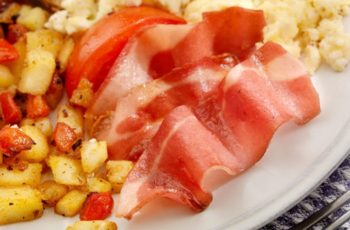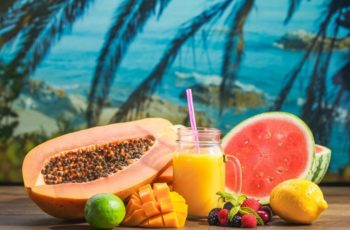Table of Contents
Which is Better Slow Juicer vs Fast Juicer? Good Tips in 2021
Whether you are a health conscious person or someone who is looking to lose weight, juicing can be an excellent way to boost your energy levels. However, the debate of which type of juicer is better slow juice vs fast juice has been on for decades. This blog post will help you understand more about these two types and find out which one best suits your lifestyle needs! Let’s read on!
1. What is a Slow Juicer?
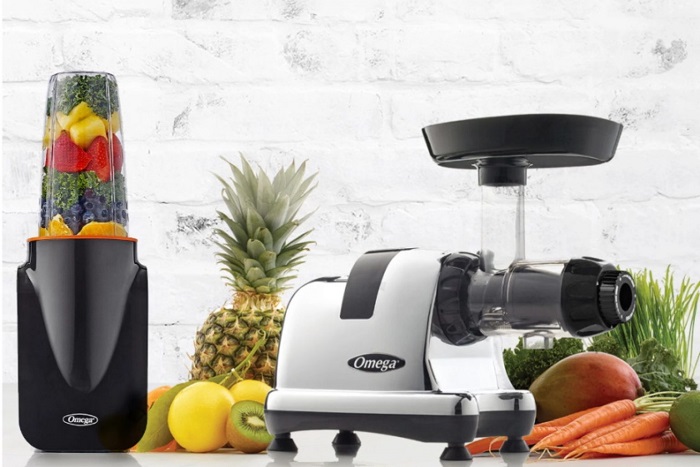
A slow juicer is a masticating style juicer which uses an auger to crush fruits and veggies. The auger spins at 80 RPM so the juice doesn’t oxidize as quickly, creating a healthier, more nutrient dense juice . It also prevents heating of the juice during the extraction process.
The primary advantages of using a slow juicer are that it can extract juice from vegetables, leafy greens and wheatgrass. This is due to the auger’s precision cutting which extracts the juice in small quantities, preventing oxidation.
Speed of Slow Juicers.
Slow juicers do not spin as fast as centrifugal style juicers, so the hot air doesn’t hit your juice when you pour it out. Another advantage of using a slow juicer is that the heat causes enzymes to be destroyed which would otherwise aid digestion.
As mentioned earlier, slow juicers don’t spin at high speeds like centrifugal style machines so they don’t overheat your juices hence preserving more nutrients! Additionally, slow squeezing means less foam in your juice . The low speed also prevents air bubbles from forming, enhancing the smoothness of your juice.
What are Advantages of Slow Juicers?
The slow juicer gives you more raw nutrients compared to centrifugal style machines which are high speed machines that heat up your juice when they spin burning enzymes and destroying some nutrients. You get higher quality fiber than other types because the machine squeezes every drop out to give you a rich, creamy texture.
If you choose to, you can use nut butter attachments with this type of juicer but it takes much longer! This means that if time is important to you or if you need extra volume, then the slow juicer may not be the best option for you.
What are Dis-advantages of Slow Juicers?
On the flip side, slow juicers can be quite expensive due to their higher quality and durable parts. For example, the auger and filter basket in a slow juicer are one solid piece which is not found in cheap models. This increases its price but also ensures that it will last for many years without the need for frequent repairs!
If you’re looking at getting a slow juicer, expect to spend more than $100 so keep this in mind before buying. Due to the high speed of slow juicers, they also take up more storage space compared to centrifugal style machines which tend to be smaller because of their design.
And while the hammer action helps juice every drop out of and fruits, there won’t be much pulp in your juice which is great if you don’t like it but not too great if you do!
2. What is a Fast Juicer?
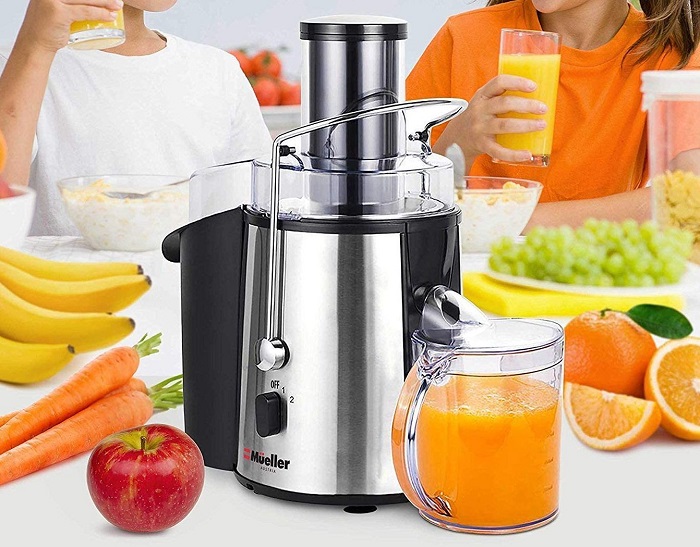
A fast juicer extracts juice by shredding fruits and veggies with sharp metal blades spinning at high speeds. Some of these machines can spin up to 13,000 RPM which heats your juice as it spins. The centrifugal force created when the machine turns on helps push out juices from the pulp and further separate the fiber and seed from the liquid.
You need to use slower speeds for blenders or else you’ll burn out too many enzymes and nutrients in your food! This type of juicer usually comes with strainers that catch seeds and pulp, allowing only pure juice through.
The primary advantages of using a fast juicer are that they can create high volumes of juice quickly. They also don’t take up much counter space compared to the slow juicer because of their design. You can get high volumes of juice in seconds which is great for busy people!
As you might expect, fast juicers are significantly cheaper than slow ones because they use simpler parts and less durable materials. The fact that they don’t squeeze all the juice out also means there is more pulp in your drink which some people like but if you want a smooth pure taste then this may not be ideal for you. Finally, in comparison to slow juicers, fast ones are easier to clean!
Speed of Fast Juicers.
Fast juicers are fast! They can spin at speeds of up to 13,000 RPM which equivalent to about 20 miles per hour (mph). You’ll get different speeds for different models but that is the typical speed range.
What are Advantages of Fast Juicers?
One major advantage when it comes to fast juicers is that they’re a lot cheaper than slow juicers. Their price is more on par with blenders which means you can get a powerful juicing machine for less! This may be good news to those who are looking to buy their first juicer but don’t want to break the bank as fast juicers are both cheap and effective.
Another advantage of using a fast juicer is that they don’t take up much counter space. Compared to slow machines, they have smaller footprints because of how light they are from having fewer parts. If you don’t have a lot of kitchen storage or counter space, then this will help increase your efficiency and comfort in the kitchen!
Fast machines also require little time and effort when it comes to cleaning. They have fewer parts which are easier to take apart and wash. You won’t be faced with a messy clean up process after using your juicer!
What are Dis-advantages of Fast Juicers?
An important disadvantage when it comes to fast juicers is that they heat up your fruit which can damage the enzymes inside the food. The high speed at which these machines spin means that excess friction is created, this heats up your juice as you extract it from the pulp. This may not seem like much but if you want all those healthy enzymes then skip this type of juicer because high heat destroys them!
Another big drawback for fast machines is that they produce juice than their slow counterparts. This is because they tend to heat up your juice as it’s being extracted from the pulp. Because of this, enzymes and nutrients are exposed to high heat which often leads to a loss of flavor and color. You’ll be able to notice reduced flavors in your juice compared to those extracted from slow machines!
In addition, fast juicers have fewer parts so if you do break something or lose a piece then it can become difficult finding replacements. Slow juicers use more durable materials as well as large pieces that don’t come apart easily. So you may need extra force to remove them when cleaning but at least these parts will last longer.
Fast machines also have a lot of vibrations can result in a loss of juice from the pulp . Even if you have a strainer attached to your machine, many people report that there is still excess pulp in their drinks. Slow juicers do not vibrate as much and therefore result in higher levels of liquid retention!
3. What Should You Look for When Buying a Juicer- Slow Juicer vs Fast Juicer?
3.1. Speed: Slow (80rpm) or Fast (13,000RPM)?
Slow machines have a lot more parts so they’re going to be heavier and bulkier. They also take longer to extract juice from your fruits and vegetables which means you have to cut everything up into little pieces before putting it in the machine. However, slow machines are a lot quieter than fast ones since they run at slower speeds. This may be important if you want a juicer that is quiet as well as efficient!
Fast juicers have fewer parts which is why they’re easier to clean but they produce higher volumes of pulp in your drink. They can also get loud when operating as their motors run faster! If you don’t mind your juice having more pulp in it or if you want to save time when making your morning drink then a fast machine is for you.
3.2. Power slow juicer vs fast juicer:
Power often comes down to how strong your motor is so look at the amps when buying a machine. This will tell you just how much force is behind that spinning blade! When choosing between different models always go with one that has more wattage since they can extract juice faster than low wattage models.
3.3. Material slow juicer vs fast juicer:
Juicers are made from three different materials which are plastic, stainless steel, and titanium. Plastic is the cheapest option but it can break easier than other types of material. Stainless steel machines are more durable but they’re also the most expensive because of their high quality.
Titanium is lightweight but it’s also one of the costliest options, they are often used in high end juicer brands! Which material you choose will depend on your budget and how often you plan to use your machine.
3.4. Size slow juicer vs fast juicer:
If you don’t have a lot of storage in your kitchen then look for a smaller sized machine with less parts. This just means that they have less space in the juicer and they’re more compact. However, you will need to cut up your fruits and veggies into smaller pieces before putting them in the machine! For larger machines which have a lot of parts, look for ones that are dishwasher safe so you can clean it faster.
3.5. Cleaning slow juicer vs fast juicer:
No one wants to spend time cleaning up after making juice right? Look for juicers with removable parts such as strainer plates or pulp containers. These components tend to be easier to remove when washing so you don’t end up scrubbing the unit itself with a brush.
The stain resistant feature is also quite useful because most food juices can quickly fade plastic materials. If you buy a slow machine then make sure that it comes with a tasking brush that reaches every nook and cranny to remove pulp!
Summary Slow machines are better for juicing leafy greens since you won’t lose as much juice. They also grind your fruits and vegetables up so the cell walls open up more easily which makes it easier for nutrients to be absorbed! Slow machines can handle harder veggies like carrots well but fast machines are great at extracting fruit juices quickly.
The low RPMs of slow juicers provide less oxidation so they will maintain their freshness longer. If you don’t mind higher volumes of pulp then pick a fast machine but try to look out for models with strainers attached.
Above are comparison between Slow Juicer vs Fast Juicer. Now, let’s see some Tips and Guides on Choosing Slow Juicer vs Fast Juicer as below:
Tips and Guides on Choosing Slow Juicer vs Fast Juicer.
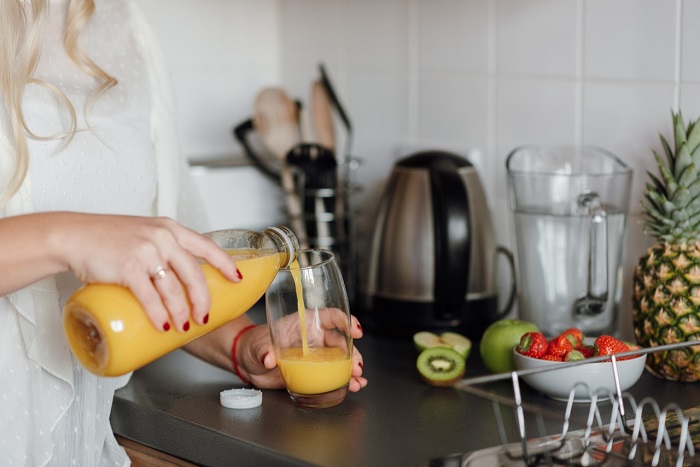
1. Slow juicer vs fast juicer. Which one is better?
In fact, it depends on different people’s needs, but here are some more Guides and Tips you should know before choosing a Slow Juicer or a Fast Juicer:
What kind of juice do you want to make? If the answer is “ordinary vegetable and fruit juices” then I suggest you to buy a slow juicers. They were originally designed for making veggie/fruit juices only, so they will extract more minerals from vegetables/fruits than fast juicers.
How much time do you have for preparing your breakfast every morning? This is where I usually choose between Slow Juicers or Fast ones. If you have a lot of time, then hold on to your Slow Juicer. Otherwise, take the advantage of speed and run for fast juicers!
Juice made in a slow juicer usually contains more nutrients because slower RPMs produce less heat which allows enzymes to stay intact while juice is being extracted. The low speed also helps prevent oxidation so your juice will stay fresh longer! However, some people complain that the juices made in slow machines tend to come out thicker which makes it harder for some to drink straight.
If you want to buy a slow juicer, there are two types of them: single gear and twin gears. Single gears rotate at 80-100 RPMs while twin gears rotate at 40-65 RPMs. The low speed in the twin gears also help to produce less froth so your juice will be clean & clear!
On the other hand, if you prefer freshly squeezed juice that comes out in seconds then you need a fast juicer! These machines usually come with high speeds (up to 15,000 RPM) which make it easier for them to extract juice from fruits/veggies. However, because of the intense speed of these juicers, they tend to generate more heat during operation which can destroy some enzymes and lower the juice quality.
When it comes to fast juicers, there are two types of them as well: centrifugal juicers and masticating/twin gear. Centrifugal juicers usually have an RPM measuring up to 15,000 which can generate more heat during operation.
Twin gears also come with high speeds but they rotate at a slower speed (up to 1,650 RPM) so they produce less heat while extracting juice from fruits/veggies. Masticating juicers can also come with different speeds, but they usually start at 400 RPM and go up to 1,650 RPM.
2. The difference between slow juicer vs fast juicers will result in different types of juice: Is a slow juicer better than a fast juicer?
For Fast Juicers: These juicers were originally designed for making fruit juices only, so they can make fresh & tasty fruit juices quickly. However, they cannot handle leafy greens well since they were not really made for that kind of job;
For Slow Juicers: Since these juicers were originally designed for vegetables/leafy green plants, leafy greens like kale/spinach will not take much time to be juiced and you won’t need to cut your vegetables into smaller pieces. However, the slow speed of these juicers might not extract juice from fruits as there are still some chunks in it.
So, which one is better? The answer is: “It Depends…” Some people like their juice freshly squeezed (so they order fast machines); while others like their juice without any chunks in it (those who love leafy green juices will choose Slow Juicers for this job).
Choose your best one! If you want to experience the whole range of fresh juices, go slow with Slow Juicers. On the other hand, if you are looking for freshly squeezed juice in a short amount of time, Fast Juicers should be your choice. You can also buy both so you can own them all!
3. Some tips on Choosing Slow Juicer vs Fast Juicer.
What Type of Juicer Do You Want To Buy?
If you want to buy a slow juicer, there are two types of them: single gear and twin gears . Single gears rotate at 80-100 RPMs while twin gears rotate at 40-65 RPMs. The low speed in the twin gears also help to produce less froth so your juice will be clean & clear!
How Much Time Do You Have for Preparing Juice?
If you have a lot of time, then hold on to your Slow Juicer. Otherwise, take the advantage of speed and run for fast juicers!
Do You Have Enough Place For A Slow or Fast Juicer In Your Kitchen?
If you have a small kitchen, then it’s better to stick with slow juicers since fast juicers need more space.
What Type of Juice Do You Want To Make?
Check Your Budget! Some models are more expensive than others but they can deliver twice the job!
4. Steps on How to Use Slow Juicer vs Fast Juicer?
Prepare your Fruits/Vegetables
For fruits: you can cut them into pieces or leave it whole depending on the type of machine and the size of the shoot; For leafy greens: cut them up according to the size of your shoot so it will be fed easily. Some Slow Juicers come with different sizes of holes so you can choose based on what you need and how much time you have to feed those veggies in ;
Turn On Your Machine & Feed Them In!
After juicing is done, turn off your machine and take out the juice from slow juicers as soon as possible (so that none will be wasted);
Pour Juice into a glass and enjoy!
It’s that simple! Leftover Leftovers should be stored in the fridge for up to 3-5 days. If you want to store them longer, then pour them into ice cube trays and put them back into the freezer. Just remember not to overfill the cubes because they will expand when frozen.
As mentioned above, some slow juicers (like cold press masticating juicer & vertical juicer) are more expensive than their counterpart fast juicers, but they can deliver twice as much juice with less leftover.
So if you want to own one of these machines which can make your life easier (no need anymore to cut vegetables or fruits into smaller pieces or no need anymore to clean out the pulp), then go slow and take the advantage of low speed to enjoy thoroughly fresh juice without any chunks!
Fast juicers, on the other hands, are easy to use & clean. You can even wash them in a dishwasher so they will be ready for your next usage. No need to cut your fruits/veggies since there is no pulp catcher (but some users prefer doing it so their juice won’t contain large pieces).
And if you want something that’s fast yet still efficient then go for centrifugal type which has 2-speed options soft or hard fruits/vegetables setting. It all depends on the model you choose but at least there are lots of choice & variety now available in the market! With proper care & cleaning, your fast juicers will be your everyday tool for making juice that save your time yet can bring you freshness & health!
5. How to Clean Slow Juicer vs Fast Juicer?
Slow Juicer:
Unplug your slow juicer from the power outlet before cleaning it;
Remove any parts that are removable from the machine and wash them or put them in a dishwasher to clean them thoroughly all parts except for motor base! Never immerse the motor base into water since this can cause a short circuit inside & ruin your juicer.
After cleaning, let air dry instead of using paper towel so you won’t have trouble removing moisture on some hard to reach parts; Rinse all other removable parts with tap water.
Brush pulp off on some large bowl (to remove larger chunks); Then pour it back into their juice pitcher (if you still want to use);
Now you can safely immerse the motor base into water and wipe it with a dishcloth or sponge.
Do not soak any removable parts inside water to avoid rusting!
After cleaning, let air dry instead of using paper towel so you won’t have trouble removing moisture on some hard to reach parts; If required, apply cooking oil to steel gears for easier turning next time; You can also rub machine’s body lightly with cooking oil before storing it to prevent rusting & deterioration.
Fast Juicer:
Unplug your fast juicer from the power outlet before cleaning it;
Remove the shoot where pulp catcher is located (in almost all types of fast juicers); Then remove pulp catcher and wash them thoroughly all parts except for motor base! Never immerse the motor base into water since this can cause a short circuit inside & ruin your juicer.
After cleaning, let air dry instead of using paper towel so you won’t have trouble removing moisture on some hard to reach parts; Rinse all other removable parts with tap water;
Brush pulp off on large bowl (to remove larger chunks); Then pour it back into their juice pitcher (if you still want to use);
Now you can safely immerse the shoot in water and wipe it with a dishcloth or sponge.
Do not soak any removable parts inside water to avoid rusting!
After cleaning, let air dry instead of using paper towel so you won’t have trouble removing moisture on some hard to reach parts; If required, apply cooking oil to steel gears for easier turning next time; You can also rub machine’s body lightly with cooking oil before storing it to prevent rusting & deterioration.
Although slow and fast juicers are both efficient in producing quality juice from vegetables and fruits, they still differ in many ways such as their speed, ease of operation/maintenance, noise level and price!
Slow juicers cost more than fast ones but they can deliver twice as much as fast juicers do since the pulp catcher is larger and there is no need anymore to cut your veggies/fruits into smaller pieces to fit them into the shoot! Slow juicers are also beneficial for people with health issues, especially those suffering from arthritis since it’s way easier to use this kind of machine compared to fast ones!
On the other hand, even though slow juicer extracts less juice than fast juicer, it takes time that not all people want to spend on making their own juice. Not only that but the pulp is also wetter & softer which cause more waste volume and cost you more money at long run.
So if you only have little time or patience then go for a fast one instead they are cheap yet efficient enough to save your time/energy/money so you can focus on other important things in life.
6. Common Mistakes When Choosing Slow Juicer vs Fast Juicer.
Thinking that fast machines extract juice faster than slow ones.
Choosing twin gears over single gears because they are more expensive (there’s no real difference).
Assuming that Slow Juicers cannot extract juices from fruits (That’s not true! Some slow juicers can handle fruit better than fast ones!).
Believing that Slow Juicers always make the best-tasting juice (You need to choose your machine carefully, some fast juicers can make tasty juice too).
Thinking all Slow Juicers are the same (No way! Different models have different speeds and features).
FAQs about Slow Juicer vs Fast Juicer.
1. Question: Can a Slow Juicer Squeeze Hard Produce Like Carrots?
Answer: Yes, But… On the other hand, if you want to extract juice from hard produce or leafy greens then it’s better to use a slow juicer since they have strong motors.
2. Question: Can You Make Ice Cream with a Slow Juicer?
Answer: No! Even though some models can handle soft fruit like strawberries, but it still depends on your machine so check carefully before you buy one.
3. Question: How Much Noise Does Slow Juicer vs Fast Juicer Make?
Answer: The Difference Is… Slow juicers are more silent than fast juicers, but once you turn on a fast machine, it can be noisy.
4. Question: How Often Do You Need To Clean A Slow Juicer vs Fast Juicer?
Answer: It Depends… Even though some fast juicers are easier to assemble and clean, but it depends on your machine. You can check everything in the manual or search it online. Some slow juicers take longer to clean but they do a better job than fast ones.
5. Question: Can I Cut My Vegetables Before Putting Them In The Machine?
Answer: Yes! No matter what type of juicer you have, cutting vegetables into smaller pieces will save you time since the whole process will be faster.
6. Question: How Much Span Does A Slow Juicer vs Fast Juicer Have?
Answer: Slow machines have shorter spans than the fast ones, but it depends on your type of slow juicer.
7. Question: Can I Put Ice In A Slow Juicer vs Fast Juicer?
Answer: No! Some slow machines cannot handle ice and it will jam the machine, but you can use the ice button to break them down.
8. Question: How Much Do You Need To Spend On A Slow Juicer vs Fast Juicer?
Answer: The Price… Most models cost more than $180 and less than $300. But there are still some expensive and cheap models out there. Just research carefully before you buy one!
9. Question: How Long Is The Warranty For A Slow Juicer vs Fast Juicer?
Answer: You Can Choose From… Most models have 1-5 years of warranty, but some brands offer more. But it still depends on your choice!
10. Question: How To Clean A Slow Juicer vs Fast Juicer?
Answer: Some Models… If you choose a slow juicer then cleaning will be easier than fast ones. Sometimes the process is exactly the same like rinsing and washing them with water, but there are some types of slow machines that need special care. Just read the manual carefully if you doubt how to clean your model!
Conclusion
Juicing is a great way to get your daily dose of vitamins, minerals, and antioxidants. But which juicer should you choose? If you’re looking for the best slow juicer vs fast juicer that suits your need then this article will help guide you in making an informed decision. We have discussed both types of machines along with their advantages and disadvantages so read on!
It can be difficult choosing between these two styles of juice extractors but hopefully by reading our blog post conclusion, it won’t seem as overwhelming or confusing. Take some time now to think about what type would work better for you between Slow Juicer vs Fast Juicer before browsing any further online.
Read more:
